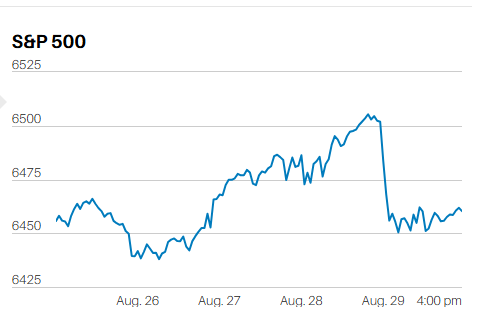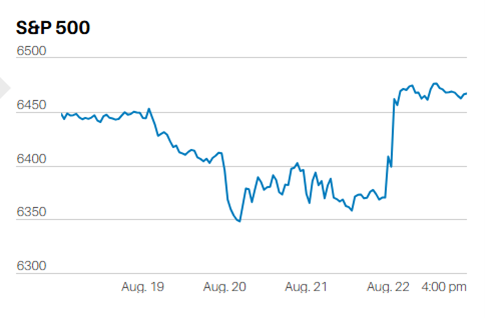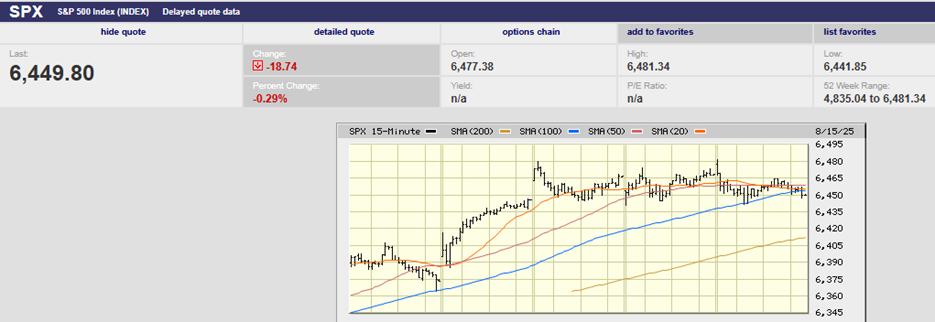Strategic, Tactical, & Individual Security Selection

Market Update
The S&P 500 lost 1.3% to finish the week at 4323.87. The Dow fell 1.3% as well, its fourth straight losing week. The Nasdaq declined 2.8% and continues to underperform the other two indices. We wrote last week that the short-term trend is down for both the S&P 500 and Nasdaq. The bounce off the 4114.65 February 24th low has been contained by the 20-day moving average. The index failed to rise above it Thursday, generating a short-term sell signal in the process. The odds still favor a retest of the 24 February low in the coming weeks.
But investor sentiment is at levels that often signal a short-term bottom. As well, the MACD and RSI are showing positive divergences. Finally, the volatility index (VIX) hit 39 in late January. It rose almost as high in late February. Stock markets often bottom after volatility readings in the high 30s.
War and inflation are both wildcards. Either could change the short-term direction of the market. They could accelerate the downward move or end it, depending on the news. The war will impact economic growth. Morgan Stanley has cut its estimate of annual global GDP growth for 2022 to 3.1% from 3.9%. It sees U.S. GDP growth at 2.7%, down from 2.8%. The bank also sees U.S. inflation running higher, now forecasting an annual CPI of 4.9% up from 3.9%.
Michael Wilson is Morgan Stanley’s chief equity strategist. He sees a further stock market correction given deteriorating earnings guidance. Reduced earnings guidance from companies has been 3.4 times as frequent as raised earnings guidance. It is the biggest disparity since 2016’s first quarter, Wilson wrote in a client note, according to Barron’s. Wilson is expecting the S&P 500 to end the year at 4400, up 1.6% from Friday’s close but down almost 8% on the year.
Norwood Economics is still expecting a flat to down S&P 500 for 2022. We wouldn’t be surprised if the stock market treads water for the next few years as earnings catch up to price. The S&P 500 is expensive, and the Federal Reserve is about to start tightening. A bear market is the likely eventual outcome of a Fed tightening cycle, but probably not for a few years. We continue to buy good companies on sale.
Economic Indicator
The economy is cooling but still expected to grow in 2022, just not in the first quarter. The Atlanta Fed GDPNow indicator is forecasting zero growth for Q1. Economic growth is expected to pick up in later quarters. The Conference Board is forecasting 3.5% economic growth for 2022. Morgan Stanley is expecting 2.7% growth. Both forecasts are well below the 6.9% economic growth in 2021.
The Chicago PMI fell to 56.3 in February from a strong 65.2 in January. Any reading over 50 indicates growth. The ISM manufacturing index was 58.6 in February up from 57.6 the prior month. The ISM services index fell to 56.5 for February from 59.9 the prior month. The drop was due to a severe shortage of supplies and labor, according to the survey.
The jobs report was strong. Payrolls rose 678,000 in February, well above the 440,000 forecast. Unemployment fell to 3.8% from 4.0% and the participation rate among prime working-age rose to 82.2% from 82.0%. Jobs are a lagging indicator but more people working means more people with money to spend. Norwood Economics sees the economy growing between 2% and 3% in 2022. We expect consumer spending to remain strong.
Index But Stay Diversified
I was talking to a prospect last week. We were discussing retirement plans, but the conversation included his preference for indexing. Norwood Economics recommends index investing for most people. We recommend an index fund lineup for our 401(k) clients. However, using index investments doesn’t mean ignoring diversification. The prospect has spent the last 30 years indexing. He has also spent the last 30 years investing exclusively in the S&P 500.
Diversification is the only free lunch in investing. It is possible to earn a higher return without taking more risk. Conversely, you can earn the same return while reducing risk. In either case, you increase your risk-adjusted return. Currently, the S&P 500 is one of the most expensive stock markets in the world. It has only been more expensive one other time and that was late 1999. The S&P 500 had a negative return over the following decade. It earned nothing for over 13 years. Meanwhile, emerging markets were earning around 11% annually. We may be about to see a replay of the 2000 – 2010 period.
There are three levels of money management. Strategic allocation is a long-term allocation. Building a diversified portfolio that meets your needs and risk tolerance for the long run. You can do that with index funds. Tactical allocation involves over and underweighting asset classes over shorter periods of time. Overweight the cheap assets and underweight the expensive assets. Currently, Norwood Economics is underweight bonds, including high-yield bonds. We are also underweighting large-cap U.S. stocks. Emerging and international stock markets are cheap compared to the U.S. stock market. We mentioned last week that Vanguard is forecasting 2% to 4% returns for the U.S. market over the next decade. It sees international stocks rising 6.0% to 6.5% during that period. Norwood Economics is overweight international and emerging market stocks. Disciplined tactical allocation can increase risk-adjusted returns. The third and arguably least important level of money management is individual security selection. Although a good value investor can consistently add excess return simply by sticking with the value style.
It is possible to gain exposure to almost any asset class through indexing. It is even possible to overweight value using the Russell 1000 Value index. You can overweight emerging markets using Vanguard’s FTSE emerging market index (VWO). You can gain exposure to small and midcap stocks using VB and VO respectively. So, index away, but don’t forget to diversify while you’re doing it.
Regards,
Christopher R Norwood, CFA
Chief Market Strategist











